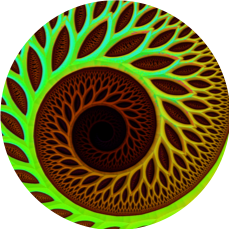Chapter 15: Diversity of Animals
Study guides for specific videos
Introduction to Animals
- How are animals different from fungi?
- What are the characteristics of all animals?
- What animals don’t have nerve or muscle cells?
- What are the closest living relatives (protists) to animals?
- What are the characteristics that the Cnidaria and Ctenophora share?
- Describe two ways that choanoflagellates are similar to sponges.
- What is the difference between diploblasts and triploblasts?
- What organisms are diplobastic?
- Be able to identify the endoderm, mesoderm, and ectoderm.
- What doe the ectoderm develop into?
- What does the endoderm develop into?
- What does the mesoderm develop into?
- What germ layer does your stomach come from? Your liver? Your muscle? Your skin? Your brain?
- Cnidarians include three groups of organisms known by their common names. What are they?
- What group of organisms lack nerves?
- What groups of organisms have a nerve net?
- What is a nerve net?
- What is a centralized nervous system?
- What is a ganglia? What is a cord?
- What group of animals are asymmetrical?
- What groups of animals are radially symmetrical for their whole lives?
- What is an advantage of being radially symmetrical vs. asymmetrical?
- What is are two advantages of being bilaterally symmetrical.
- What is cephalization?
- What concentrates in the cephalized regions?
Protostomes
- What is a coelom? What are two functions of a coelom?
- Coelomates are broken into two big groups. What are those groups called?
- Coleomates all share three characteristics in common. What are they?
- What are two differences between protostomes and deuterostomes?
- What group of animals are transparent, gelatinous diploblasts that prey on plankton and move by cilia?
- What group of animals are suspension feeders that are sessile as adults, but mobile as larvae, and are asymmetrically arranged?
- What group of animals are bilaterally symmetrical worms that are triploblastic but lack a coelom. They live in mud and move via cilia.
- What two groups are protostomes split into?
- What is the morphological difference between the lophotrochozoa and the ecdysozoa?
- What is molting? Cuticle? Exoskeleton?
- What two things do all flatworms have in common?
- What are the three groups of flatworms?
- What group of flatworms are free living flatworms that are hunters and scavenger in the oceans?
- Which group of flatworms are the “moochers of the animals kingdom”? They are endoparasitic tapeworms that lack a mouth and a digestive system.
- Which group of flatworms are endoparasites that gulp host tissues, but do have a digestive tract?
- What do segmented worms all share in common?
- What are the four groups of mollusks? What do they all have in common?
- What group of organisms are suspension feeders with 2 shells on a hinge?
- What group of organisms have a large muscular foot and radula but lack a shell?
- What group of organisms have a large muscular foot and radula with a shell of 8 plates?
- What four groups of organisms do the cephalopoda include?
- What characteristics to all cephalopods have in common?
- What are the physicals characteristics of roundworms?
- What are the most abundant animals on earth (in terms of numbers of organisms)?
- What are the most species diverse animals on earth?
- What group of organisms have segmented bodies and limbs, but lack jointed limbs and an exoskeleton, are microscopic and feed by sucking fluids living on the floor of aquatic environments?
- Why are members of the Tardigrada so amazing?
- List 6 characteristics that members of the Arthropoda share?
- What are the four groups of Arthropoda?
- How can you differentiate between a millipede and a centipede? List two ways.
- Insects have 3 tagmata. What are they?
- What structures are on the head of insects?
- What are the common names of members of Crustacea?
- What characteristics to members of the Crustacea all share in common?
- What do all Deuterostomes share in common?
- What are the three phyla of the Deuterostomes?
- Why are Asteroidea (i.e. starfish) considered part of the group Bilateria?
- What is the body plan of members of the Echinodermata?
- What characteristics do sea stars (star fish) have in common?
- Starfish have sex with their arms….weird!!!
- What do sea urchins eat?
Deuterostomes
- Members of the cepholochordata are known as lancets. From an evolutionary perspective, why are these organisms so important?
- What physical characteristics do members of the cephalochordate share? How do they feed?
- What is a notochord?
- Do all chordates have a vertebral column?
- What member of the Chordata has an exoskeleton? What is the exoskeleton called?
- List two characteristics that all vertebrates have in common.
- What are five of the major innovations in vertebrates in the order that they appear in the fossil record?
- What were the first four-legged land creatures known as?
- Why was the amniotic egg so important for the success of animals on land?
- What is a placenta; and how is it related to the amniotic egg?
- Two of the most primitive vertebrate groups lack jaws. What are they called?
- What group of organisms are the link between fish and tetrapods?
- What is the difference between a lobe-shaped fin and a ray-shape fin?
- Why are caeclians so strange?
- What are the characteristics of the members of Amphibia?
- What do mammals, lizards, turtles, and birds have in common that fish, frogs and lampreys don’t share?
- What are the three characteristics of mammals?
- Be able to differentiate among the mammalian groups: monotremes, marsupials, and eutherians? Which group do humans belong?
